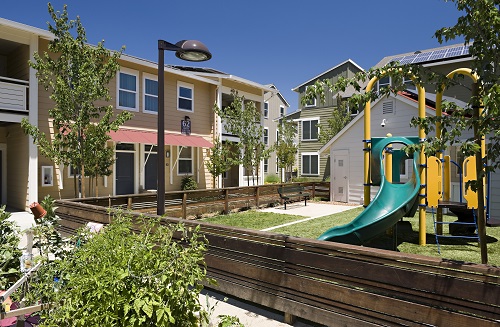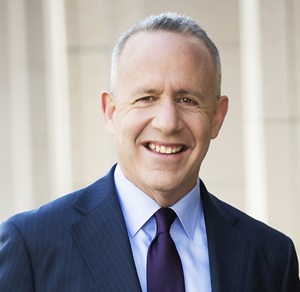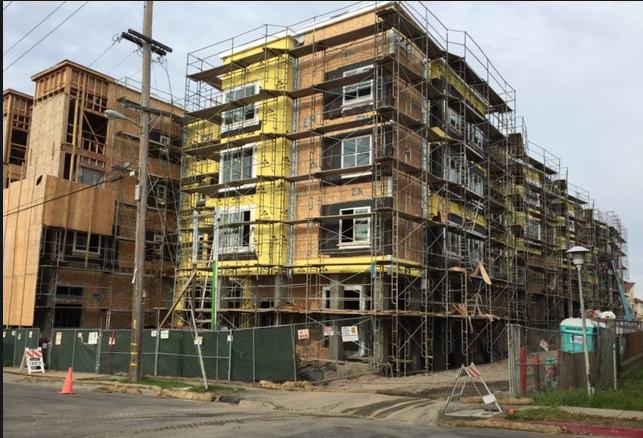
Green Building in Low-Income Housing Tax Credit Developments (Photo: HUD.gov)
The Housing Brick Wall: Wildfire Concerns, Environmental Factors, Affordability Collide In Trend of Overturning Luxury Developments
In the last 6 months, multiple major developments in the state have been stopped by wildfire issues alone
By Evan Symon, April 13, 2022 2:19 am
In October, a San Diego Superior Court judge halted most of the SD County Otay Ranch project due to concerns from the California Attorney General’s office and others for not properly covering wildfire risk.
In January, Lake County Judge overturned a Lake County Board of Supervisors decision and halted the approval of the Guenoc Valley luxury resort due to both wildfire concerns and CEQA issues.
And just last week, a San Diego County Superior Court Judge ordered the city of Santee to unapprove the 3,000 home Fanita Ranch housing project. once again over wildfire and wildfire evacuation concerns.
Other major projects across the state are currently scrambling to meet wildfire regulations and concerns, with water concerns and other environmental issues, threatening to derail even more. The recently announced Disney Cotino project in the Coachella Valley barely squeaked by several major issues, while environmental laws to protect Joshua trees have hit the brakes on most developments in nearby cities. As many of these developments cater to the luxury crowd or higher priced homes and units, the argument that they would help ease the housing crisis in California have largely fallen on dense ears as, even with CEQA density bonus laws setting aside a percentage of units in new buildings for affordable units.
With more and more major developments now either dissipating or having to radically alter their plans to meet the changing standards and concerns, many developers, and those in favor of the new developments, have said that things need to change in California for new housing to help alleviate the housing crisis, and developments to help areas hurt by the COVID economic halt to be approved more.
Development halts in California
“Out of everything holding back all of these developments, the one thing that makes sense to me is the wildfire risk a lot of these politicians and judges are seeing,” explained developer Martin Schules, who stopped building new housing in California two years ago in favor of other Western states, said in a Globe interview Tuesday, “You don’t want to be the named person in the news for accidentally creating a bottle neck that harmed escaping residents. Last year [the Dixie Fire] had all those people from around Lake Tahoe be stuck in traffic for a long time trying to get out.
“CEQA has been updating laws to make stricter standards on evacuation plans, and honestly, that’s why a lot of these developments are facing problems. Many drew up plans under older laws pre-Paradise, and now that they are in the final stages, they are being hooked back by all of these changes. And a lot of these developers are already working to meet that, both to have it all set up and because they don’t want to be on the other end of a PG&E style lawsuit.”
A real estate agent, Angela Morris, also told the Globe Tuesday that new luxury units are not actually that big of a problem as many think.
“A big thing has been developers being forced to build luxury units because, with how taxes and costs are, it’s the only type they can build where they can get a return of investment,” said Morris. “But even then it’s not that bad. Sure, these luxury units go up, but enough people have been renting them that cheaper units they previously occupied go up, and then more cheaper ones open up from people moving on up. I don’t want to call it trickle down, but it does help open up other units down the line. It’s just easier to hate the ones building the newer places because they are so unaffordable and that’s the only thing many see on the surface.”
When it comes to other environmental issues, Schules added that “There are a lot of new regulations coming in California, like a shift away from gas to electric. But, outside of wildfires and maybe the endangered species thing because that is really hard to get around, there’s not a lot that should be holding these places back. They’re figuring out the wildfire updates, water issues can be alleviated with, say, moving to more native plants and grasses being used and building in water saving appliances. And other problems, like affordability, is being worked in through the density bonus and residents older, cheaper units opening up.”
“The thing is, if we are just allowed to operate as is, and maybe be given incentives to build more lower cost units, like not having to build garages or offer parking spots for all units, then we can really start solving the housing crisis. Same goes for the environment. Give us a bit of time to work out the wildfire issues, and new plans can go up. We can even avoid endangered species damage if we have allowances to move them or plant more in their place elsewhere. And these are just a few examples. There are so many ways to meet this, but the state has to stop treating developers like an enemy. Many, like me, left because of how difficult they were becoming. They can’t afford many more to abandon them just when they need them most while also burying them under regulations.”
Other proposed developments in California are currently in the courts over wildfire and environmental issues and are due to be ruled on soon.
- Bill to Require Law Enforcement Disclosure if AI Was Used To Help Write Reports - August 7, 2025
- Gov. Newsom Files FOIA Request To ‘Expose True Cost’ Of L.A. Federal Troop Deployment for Anti-ICE Riots - August 6, 2025
- California Redistricting: How Newsom’s Plan Will Demolish Hard Fought GOP Gains - August 6, 2025





This is all by design folks. The Demonrats that run things really, really hate you. Fight back and run these NWO commies out of the state.